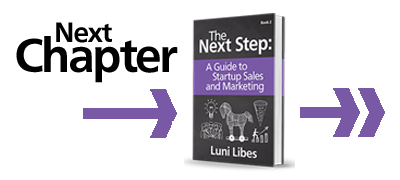The first step is a doosey.
The first sale is typically the hardest to close. You have nothing but promises to talk about. No other customers to point to. No positive feedback on your sales pitch. Nothing but a pool of “noes” to draw upon for ideas.
The Lean Startup philosophy doesn’t make this any easier. If you are out trying to sell your minimal viable product (MVP), you have to find a customer willing to live with the minimal nature of that product. Remember, the “viable” in MVP means that a customer will actually pay for it, not just that a customer will use the product for free.
In regards to pricing, do whatever you need to do to close the first sale. That sale is proof that you have a viable product. That first sale (or first few sales) does not need to prove that the target price is realistic. That comes later, with more sales.
To get to the first sale, you may have to give away a few copies of your MVP. It is better to have potential customers using your product or service than no one using it, because then outsiders will provide you feedback about what works, what doesn’t, and what is missing.
However, once you have paying customers, it is far more important to listen to their feedback than the feedback of anyone using the product for free. Remember, what you need to survive are revenues, not usage, so listen to the people who are paying you money.
Finally, remember: success drives success. Success is contagious inside your company and validates your company to prospective customers. Once you have closed a few sales, you can use that momentum to close more. Once you have a few yeses, you will have some feedback on what works in your sales pitch. Use all that to refine and iterate.











